Looking back to Gameweek 10 of the Premier League, most eyes were on the big six fixture of the weekend, Tottenham at Anfield to face Liverpool. However, the result of the week came a couple of days earlier, when Leicester City travelled to St. Mary’s and tore Southampton apart for the ninety minutes. The final score was 0-9 and Southampton were left shocked, embarrassed, and slightly confused as to what just happened. The match solidified Southampton as relegation candidates at the time, as post-match they found themselves in 18th place and with the lowest goal difference in the league at -16.
Fast forward to the present, and Southampton are in 12th place. A huge turnaround that puts them five points clear of the relegation zone, and unless a major turn of events happens, Southampton will likely be in the Premier League come next season. So what changed? It was not luck – Southampton were not suddenly gaining points despite being the worse team, nor have they been reliant on other teams dropping points around them in order to further move up in the table. Ralph Hasenhüttl has quickly found a way to fix the problems that were occurring that led up to the 0-9 loss and has found a way to maximise the output of several of his players in a new system. This tactical analysis will be a team scout report showcase on what Hasenhüttl has changed in order for them to be safe from relegation for now.
Formation Change
Prior to the 0-9 demolition, Hasenhüttl was often tinkering with formations, both in-match, as in switching formations during matches when substituting players, and from match to match, as in it was almost impossible to guess how Southampton would set up before the teamsheets came out each week. After the Leicester City loss, it took two matches for Hasenhüttl to revert to what he is known for: his 4-4-2. Since Southampton’s match against Arsenal (two game-weeks after the Leicester City match), Hasenhüttl started 100% of Southampton’s matches with the 4-4-2 formation and has only done in-game changes on two instances, versus Norwich, in the last five minutes to hold on to a lead, and versus West Ham in the last ten minutes to chase a point.
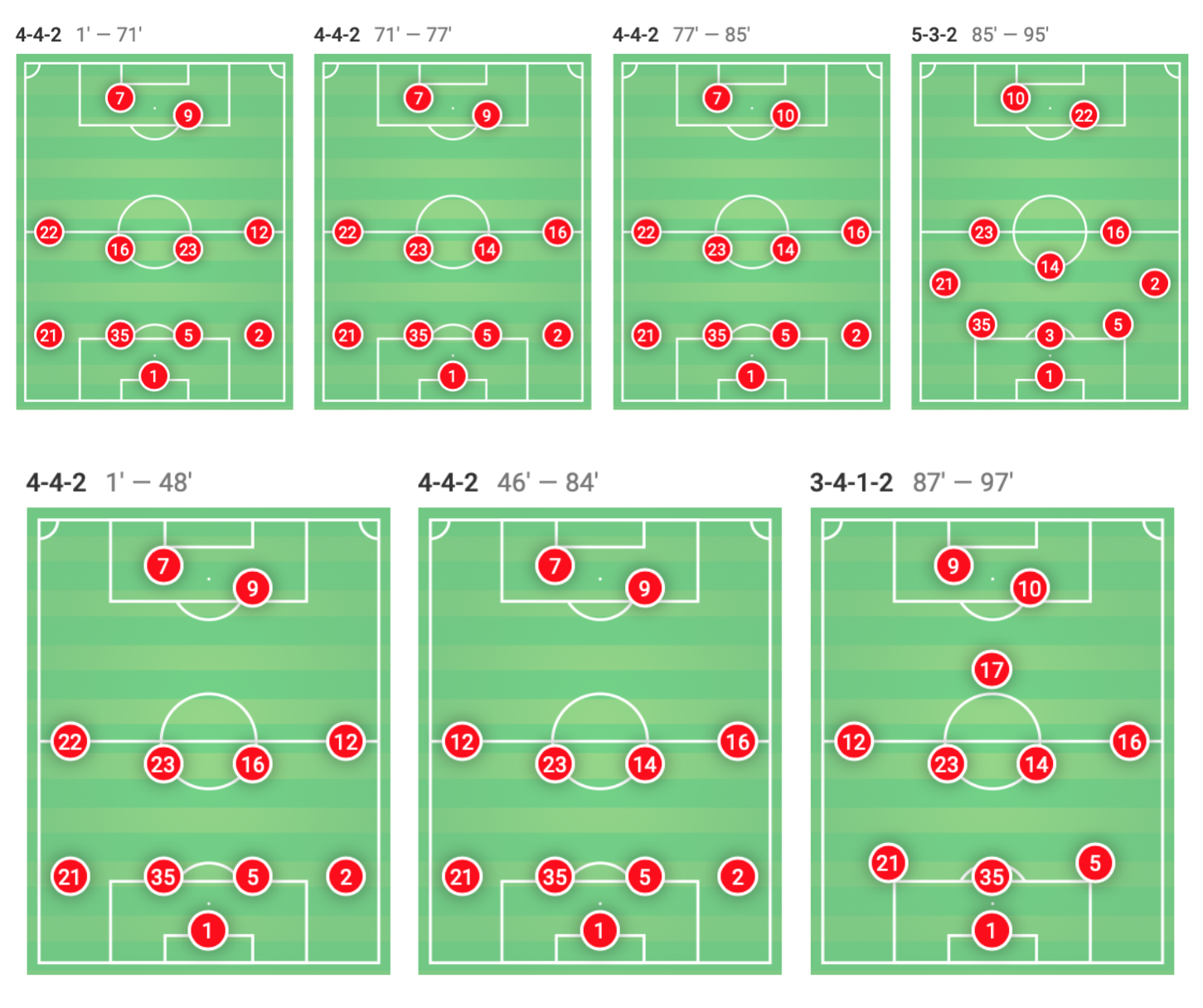
That means in the nine matches that Hasenhüttl has used the 4-4-2, Southampton have managed to pick up 17 points – an unbelievable turnaround.
The 4-4-2 has been Hasenhüttl’s preferred formation since his stint with RB Leipzig, where he took the newly promoted club at the time and had them play an attractive brand of football that was stable and allowed them to flourish in the Bundesliga, even to this day as they currently sit at the top of the Bundesliga table, ahead by two points.
His 4-4-2 somewhat resembles a 4-2-2-2 in that the midfield four are usually not on the same level. More often than not, the two wider midfielders will be situated a little higher than the two in central midfield.
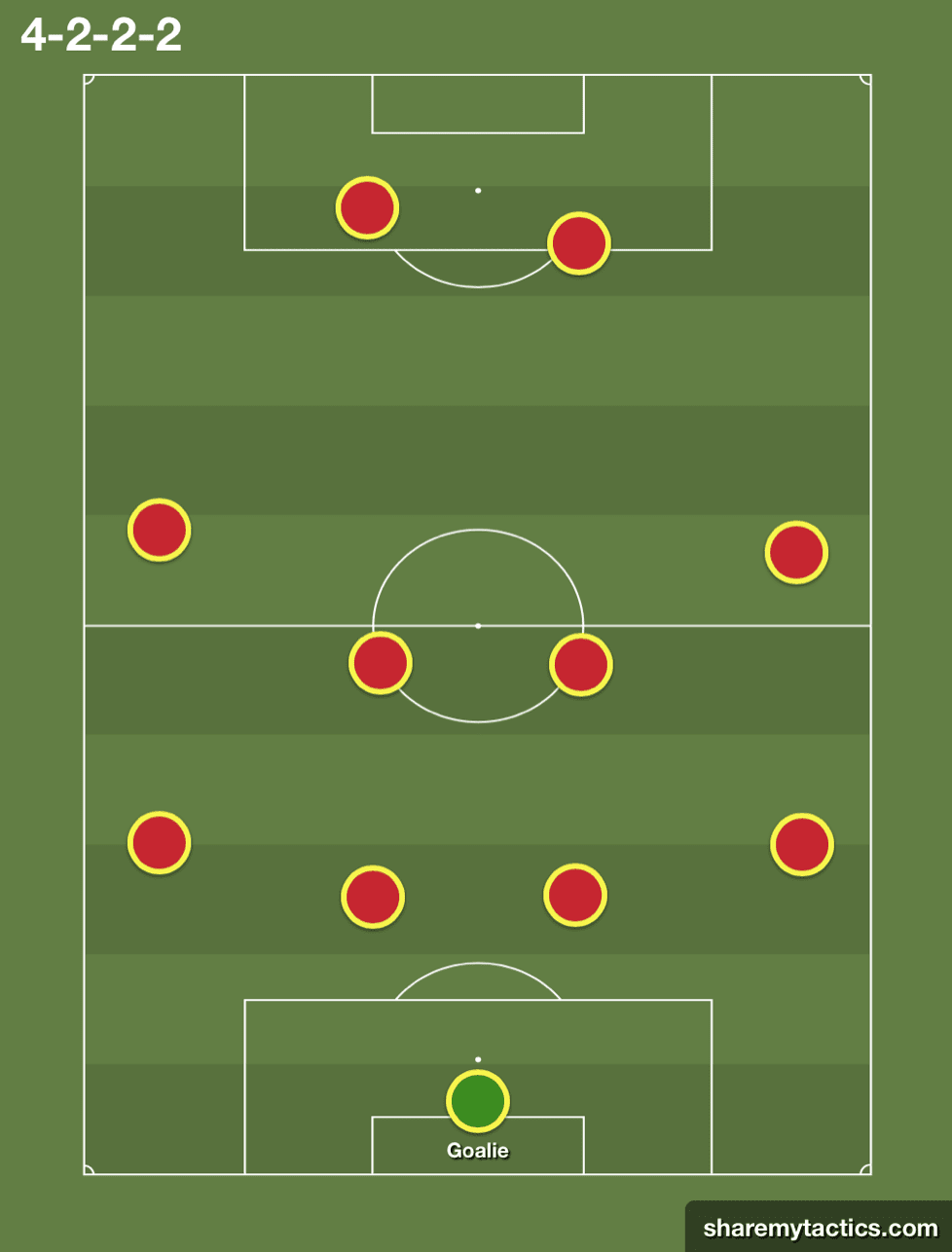
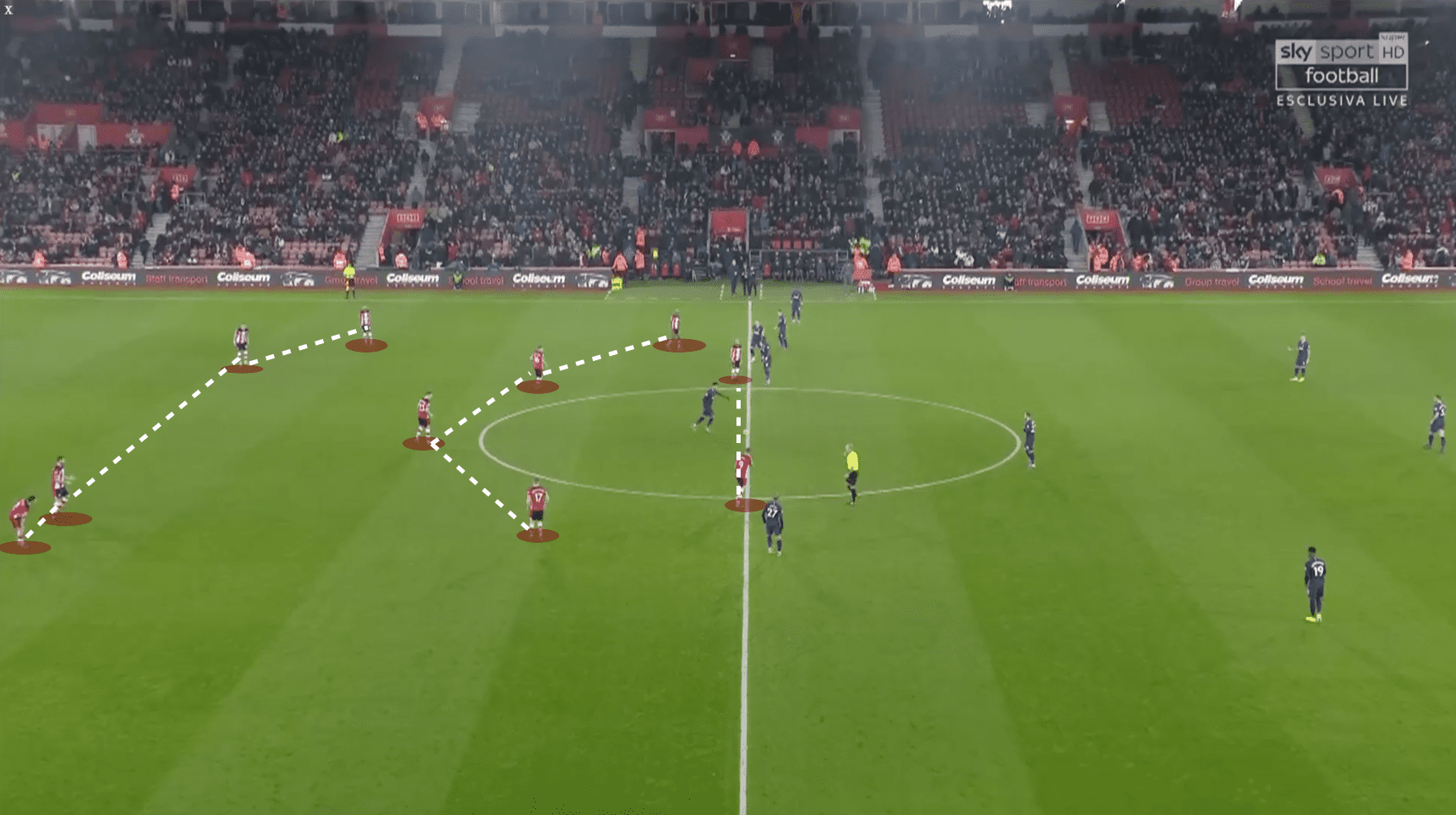
This 4-4-2 is a direct style of pressing football in that the tactics to get the ball into the opposition’s half relies on direct long balls to the forward players, but the way the team react to losing that long ball is not to sit back and defend, but instead to form a designated counter-press which allows them to win the ball back in the opposition’s half, and therefore be in a position in which they can attack quickly and efficiently from, while simultaneously attacking when the opposition is not in their preferred defensive set-up.
The first step, as mentioned, is the long balls. What Southampton attempt to do is use long balls to target their strikers, and put the opposition’s defence under pressure. Long balls are not the only effective way to do this, and more often than not Southampton will use through balls to get the same effect.
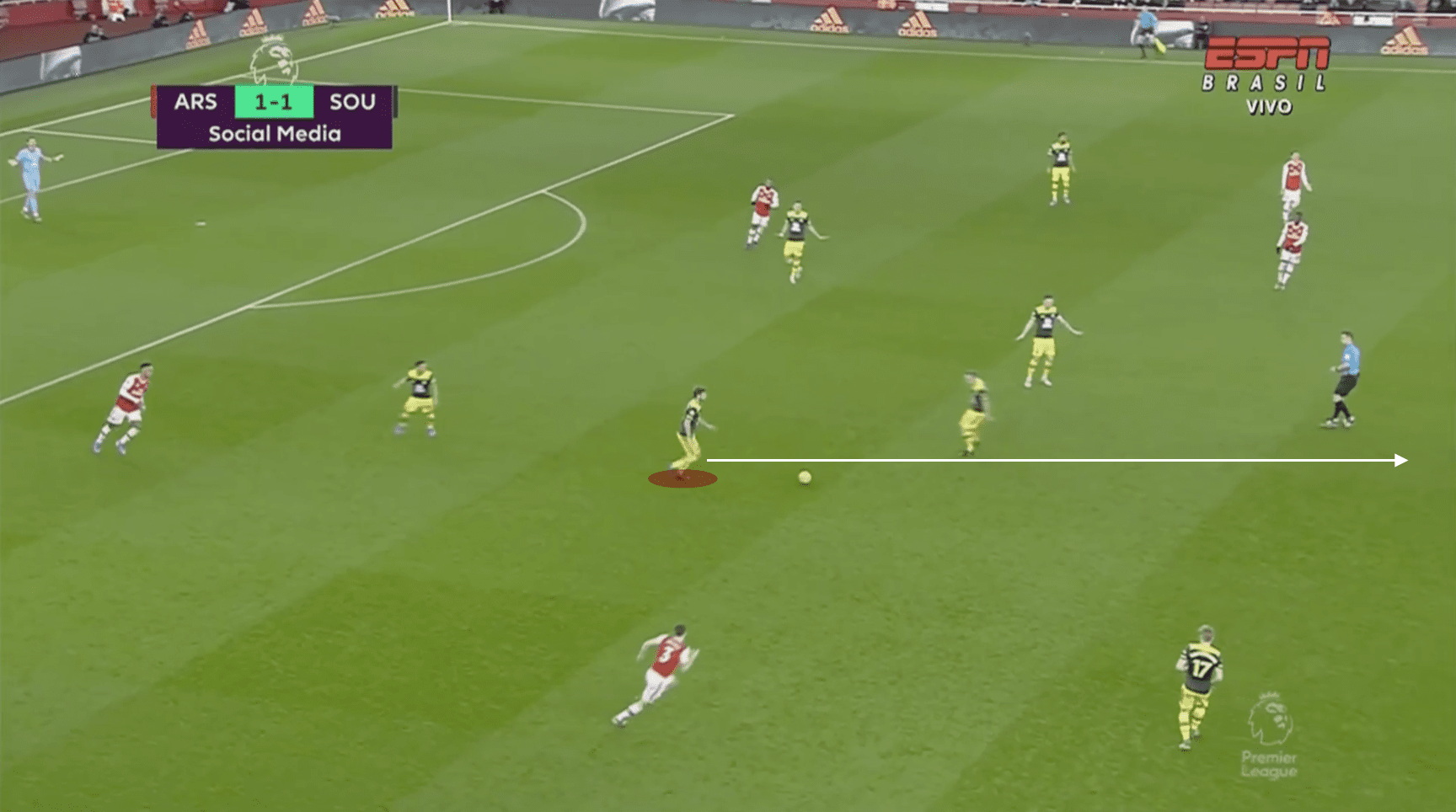
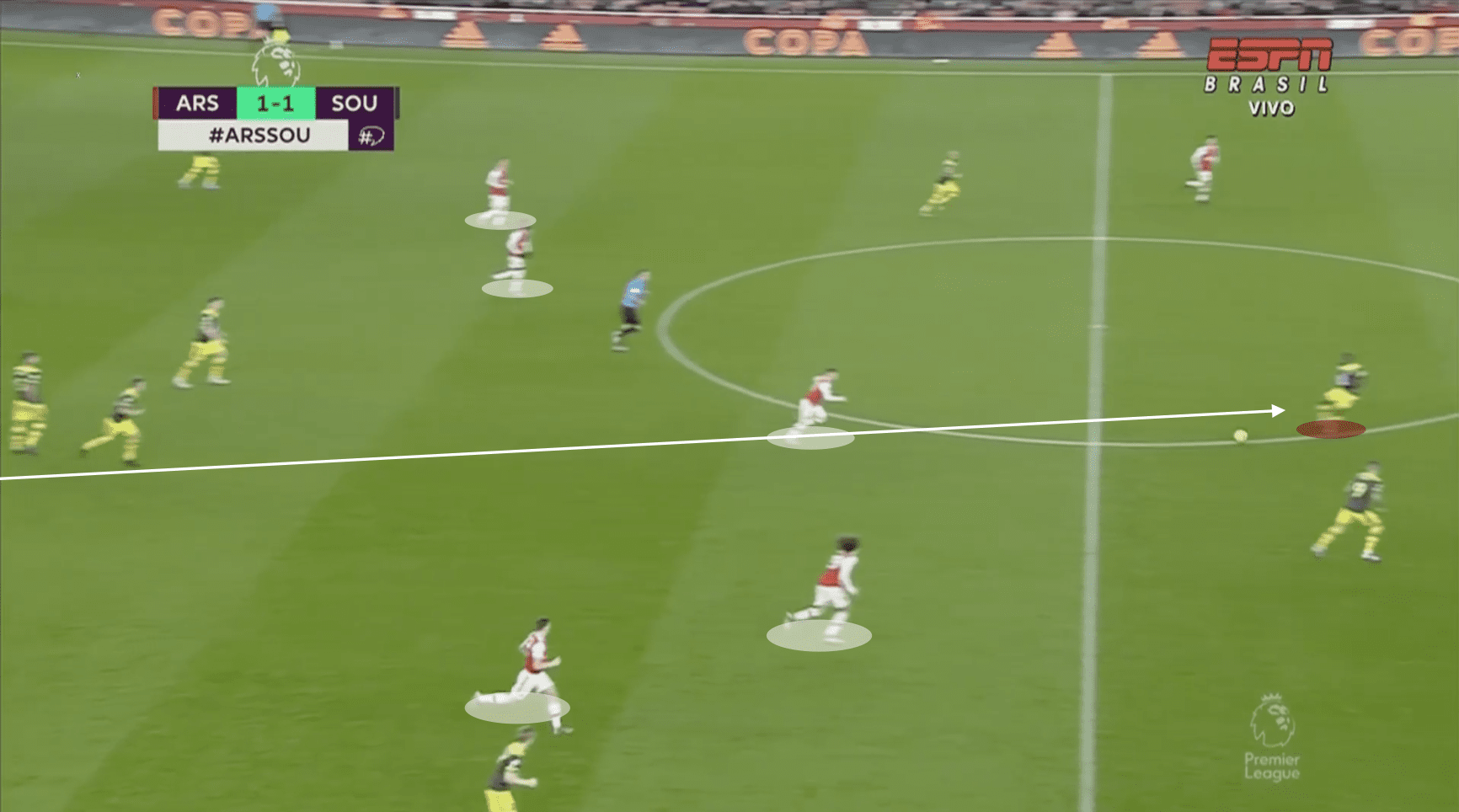
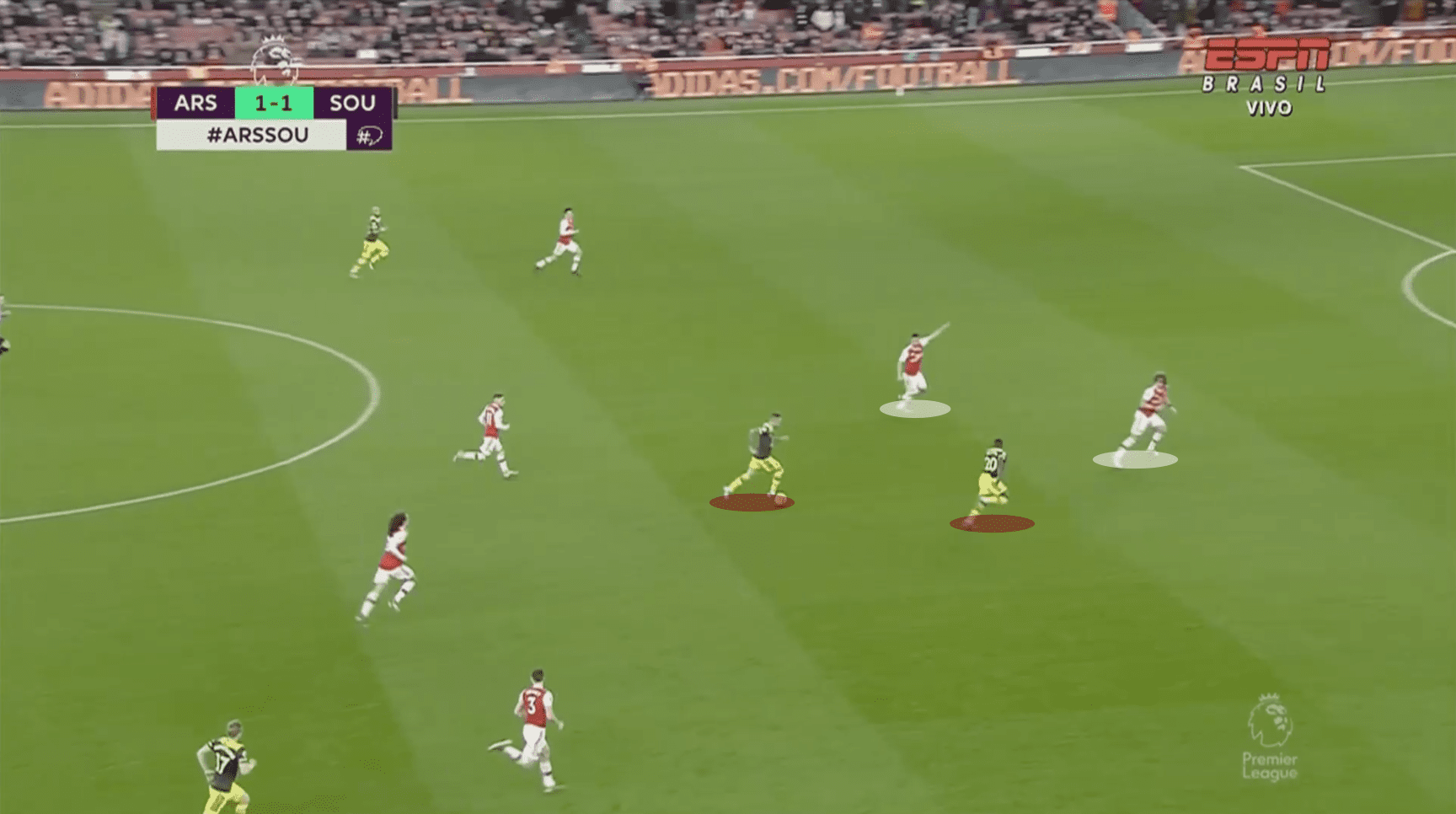
If the long ball does not work though and does not reach the intended Southampton player, Southampton do not immediately recede to a defensive shape, something that is usually associated with ‘long-ball teams’. Instead, they initiate a press, having the midfield attempt to win the ball back. This is where the benefit of Hasenhüttl’s 4-4-2 comes in. The two wide midfielders, that are a bit higher and narrower, during possession link up with the two forwards and the two deep midfielders to form somewhat of a circle. Together, they can easily ‘trap’ players, making much easier to press effectively, efficiently, and successively.
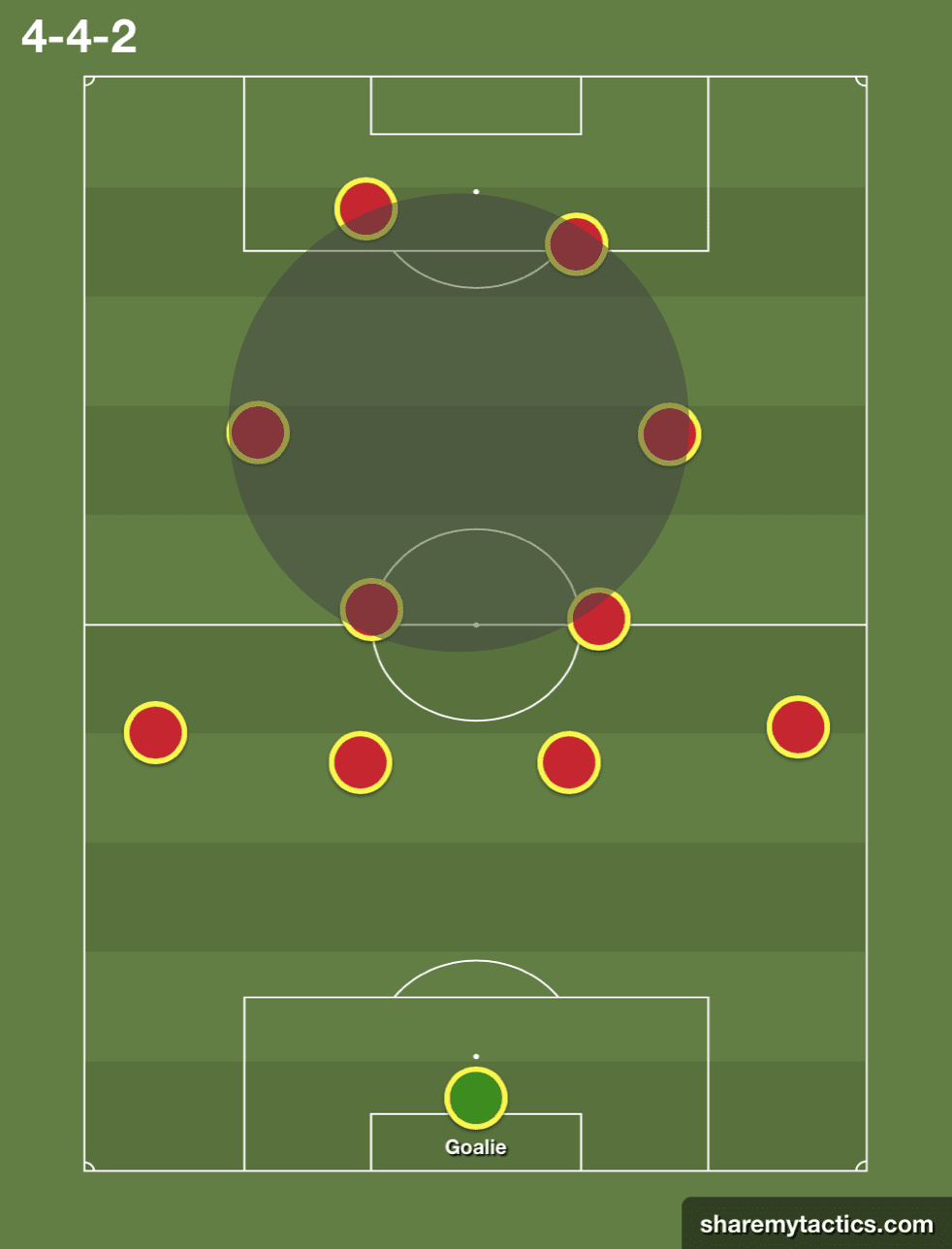
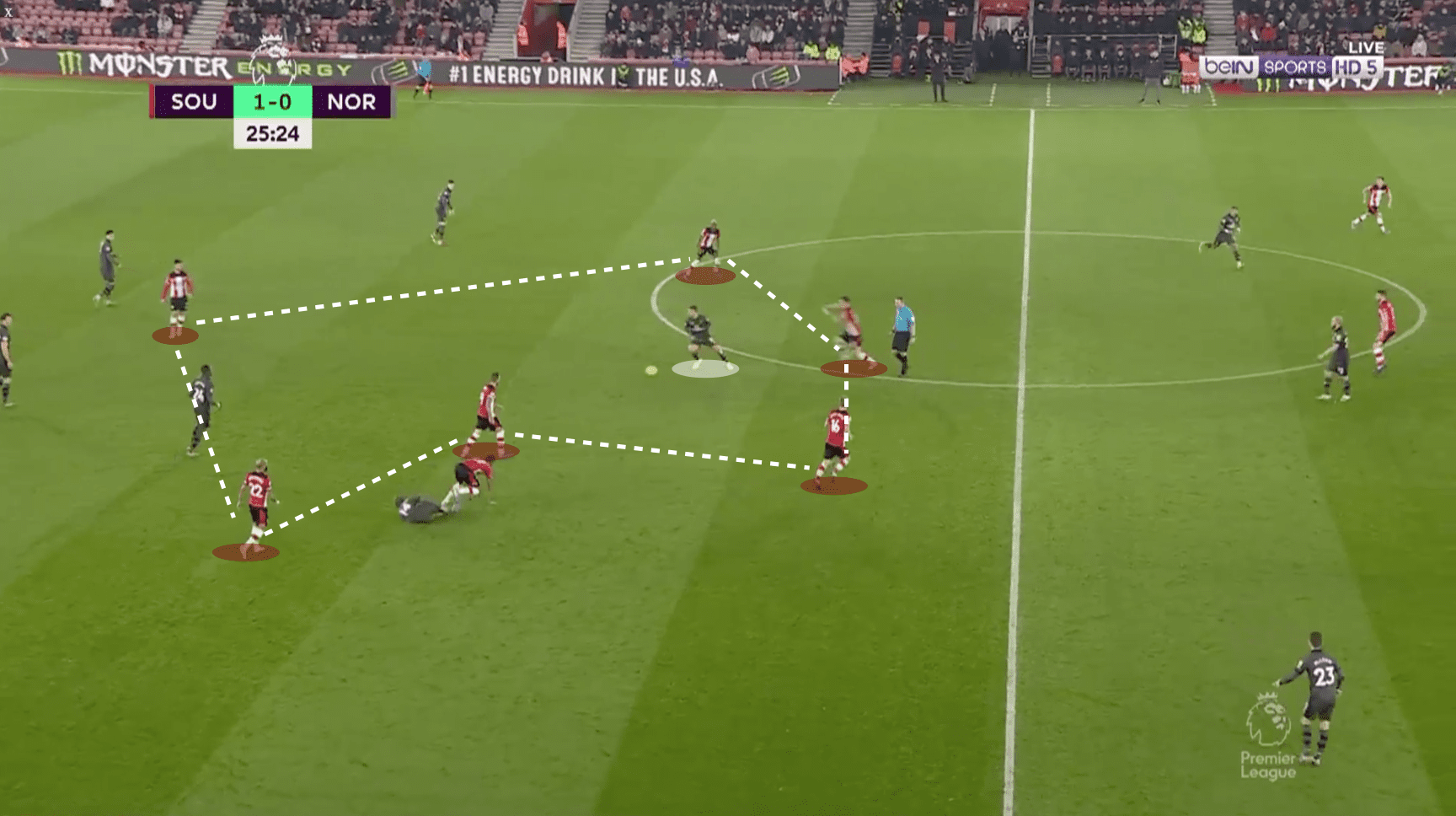
This press is the key part of their improvement, as not only does it give more attacking opportunities against a fragile, disoriented opposition defence who are in transition, but it also helps Southampton’s defence. The pressing gives the back four some extra reassurance, as they are not forced to defend certain players, and are not being dragged out by opposition players, but instead defend as a line. This essentially creates fewer gaps, and holes for attackers to exploit.
Consistent Starters
Prior to the Leicester City match, Hasenhüttl was consistently bringing players in and out of the team, to accommodate for the formation changes he was making, as well as effectively trying to use his squad, rather than tire his first XI. What this did, however, was add another level of inconsistency, as players who finally would pick up some form would find themselves out of the XI come the next match.
The XI now is much more settled, with a consistent back six starting almost all matches, and the front four having only some slight rotation involved. Of course, using a squad is important, and there are times where rotation is a necessity, especially when the club find themselves still competing for the FA Cup.
A Reset Mid-Season
It’s interesting because what Hasenhüttl has done in the space of two weeks since the Leicester City match, is what most managers take a couple of months or even the summertime to do. It was clear that the switch of formations every match in order to surprise the opponent and be unpredictable in their approach was just not working. The players were often all over the place and seemed to understand little about what they needed to do. Hasenhüttl took the international break to restructure how he’s managed matches this season and his tactics going into matches. His analysis showed that it was clear a more consistent style was needed. The stability the 4-4-2 brings, along with the fine form of several Southampton players, has brought them up in the table and it will be very unlikely that they’ll get relegated, a possibility that was on the table a couple of months ago.
They play Leicester City this coming matchweek, and if they were to get a result – especially a win, their transformation this season would somewhat come full circle. Southampton will be high on confidence too, especially after beating both Chelsea and Tottenham in the span of three match-weeks. However, Leicester City are flying at the minute, and even if Southampton are unable to manage even a point at the King Power, their improvements over the past few months should not be undermined. If they lose, hopefully they can keep the score respectable unlike last time, and move on to the next match and continue their form.






Comments